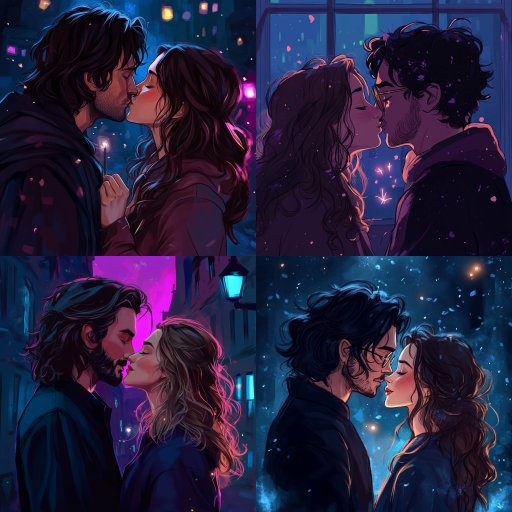Explore the Best AI Image Gallery

The Future of Product Photography: How AI is Changing the Game
In an era where visual appeal drives consumer engagement, product photography has become a cornerstone of successful marketing strategies. As the demand for high-quality images rises, the integration of artificial intelligence (AI) into product photography is reshaping how images are created and managed. This examination delves into the innovative applications of AI in product photography, its impact on the creative industry, ethical considerations, and future trends that are changing the landscape of photography.
The Role of AI in Product Photography
AI-powered tools are revolutionizing product photography by enhancing efficiency and creativity. Here are some of the ways AI is being utilized:
- Automated Image Editing: AI algorithms can automatically retouch and enhance photos, significantly reducing the time photographers spend on post-production. Features like background removal, color correction, and blemish removal are commonplace in AI photo editing software.
- Smart Composition: AI tools can suggest the best composition and angles for product shots. By analyzing thousands of successful images, these algorithms can recommend adjustments that enhance visual appeal.
- Augmented Reality (AR) Integration: With AI, businesses can create AR experiences where consumers can visualize products in their environment, making product photography more interactive and engaging.
- 3D Rendering: Advanced AI technologies allow brands to create realistic 3D models of their products, enabling potential buyers to view items from every angle, thus replicating the experience of in-store shopping.
Impact on the Creative Industry
The implications of AI in product photography extend far beyond technical enhancements; they are changing the role of photographers and the broader creative landscape. Some significant impacts include:
- Changing Skill Sets: As AI takes over technical tasks, photographers are expected to develop new skills, such as understanding AI tools and focusing on creative aspects that machines cannot replicate.
- Enhanced Collaboration: The fusion of AI in photography fosters collaboration between human creativity and machine efficiency, producing results that neither could achieve alone.
- Market Accessibility: Smaller businesses and startups are gaining access to professional-level photography services due to AI-driven software that democratizes high-quality image production.
Ethical Considerations
As with any technology, the rise of AI in product photography raises important ethical questions:
- Authenticity: AI can create images that may misrepresent products. This challenges traditional notions of authenticity and raises issues about misleading advertising.
- Intellectual Property: The use of AI-generated images raises questions about ownership. If a machine creates an image, who holds the rights to that intellectual property?
- Job Displacement: With the automation of various photographic tasks, there are concerns about job loss for photographers and editors, leading to a need for reskilling within the industry.
Future Trends
Looking ahead, several trends are likely to shape the future of AI in product photography:
- Increased Personalization: AI can analyze consumer behavior and tailor product photography to resonate with specific demographics, thereby increasing engagement.
- Enhanced Image Recognition: As AI continues to evolve, its capabilities in image recognition will improve, allowing businesses to better analyze performance metrics and optimize their visual marketing strategies.
- Integration with E-Commerce Platforms: AI-driven photography tools will increasingly integrate with e-commerce platforms, enabling seamless image uploads and adjustments while offering enhanced user experiences.
In conclusion, the integration of AI in product photography heralds a new age of creative possibilities while posing challenges that must be navigated thoughtfully. As technology continues to advance, it will be essential for industry professionals to adapt and innovate, ensuring that they leverage the power of AI responsibly. The ultimate goal remains to create captivating product imagery that resonates with consumers while upholding ethical standards in creativity.




](https://images.ai-img.art/thumbnails/150/c2c9c48b38fae37f0a457b80b084ed01ba803810fc8f488c8f610c03abc74049.webp)
](https://images.ai-img.art/thumbnails/150/bddf3ae4a232290858389b933c866ad3be429ef2e25c23a9f4d7713ed6e44d0b.webp)







](https://images.ai-img.art/thumbnails/150/f67d9af3398150f2ab1bcf250717fea134275e2ca896252b54a4d9bb3719f9ac.webp)















](https://images.ai-img.art/thumbnails/150/008b5d5d49667cc2e93a5f8a8adfaa545963da99c39ff0901f5296294636400d.webp)
](https://images.ai-img.art/thumbnails/150/f9584153b4cddd8c9fab611dc10247549b275c59bc173251e37d0935874f9deb.webp)






](https://images.ai-img.art/thumbnails/150/4289d1230b86a96c4d556636c3167bed0ef38f850826549517e4e45db4d87bf7.webp)



